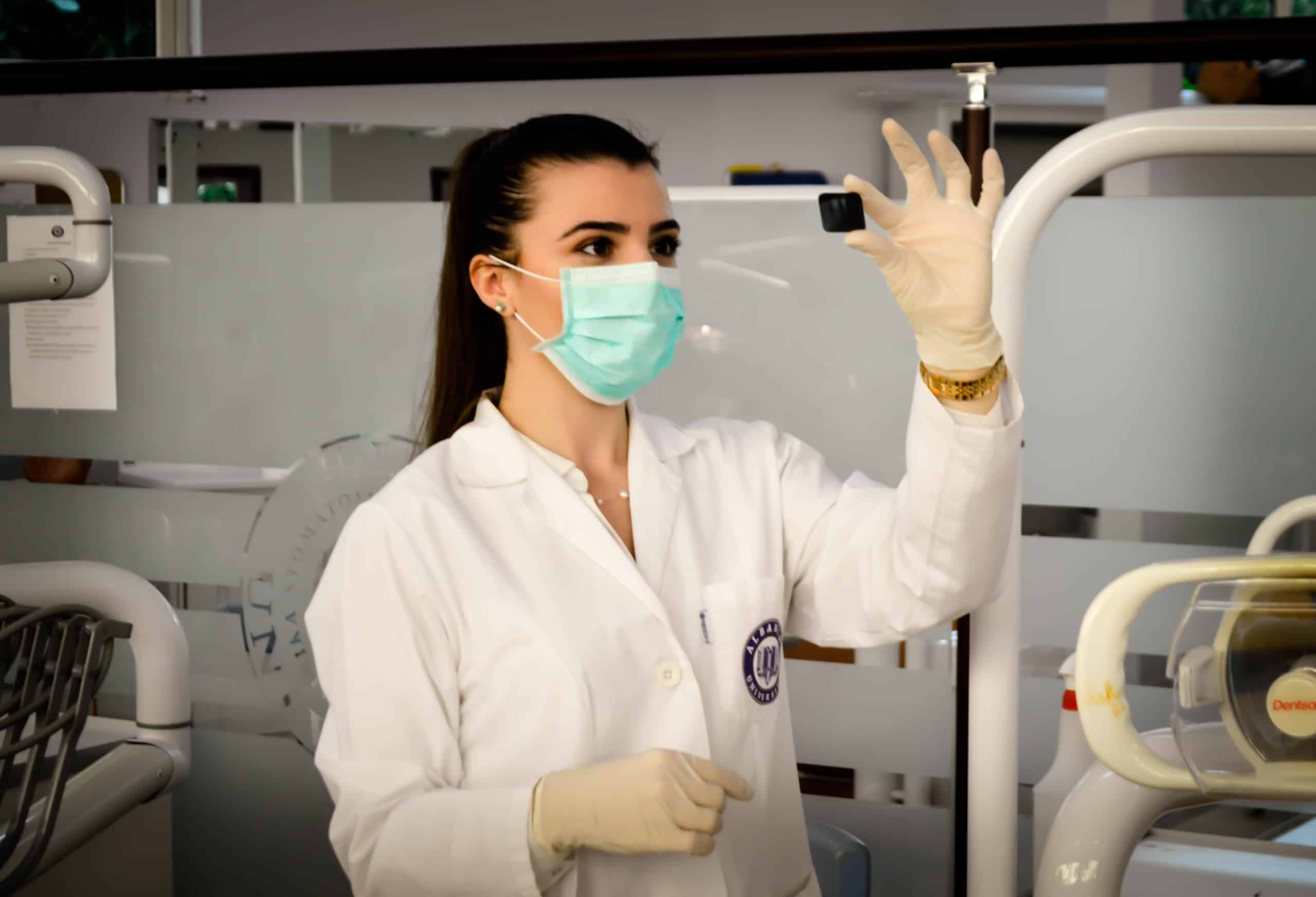In October 2014, patient Lori Mills, then 37, sought treatment for a significant cause of a rare autoimmune disease that sent her careening into walls, made her struggle to carry milk, and occasionally left her paralyzed. The disease, chronic inflammatory demyelinating polyneuropathy (CIDP), only affects 2-3 women per 100,000 adults. Since it is rare, it has very few treatment methods, but regenerative medicine introduces new possibilities that could improve the patient experience for others like her.
Lori was receiving shots as part of a home visit every 9 days to improve her quality of life, but these were a bandage, not a cure. The disease remained debilitating. Worse, these home visits cost from $15,000 to $30,000 each.

Photo by Bill Oxford on Unsplash
A possible solution
Desperate for a solution, Lori spoke with Northwestern University in Michigan and discovered a possible treatment part of an experimental clinical trial. This treatment would carry a much lower one-time cost, so she brought it to her health insurance provider, Blue Cross Blue Shield. They said no. This is not the patient experience that people like Lori expect or deserve.
However, regenerative medicine is changing this. In fact, it already changed Lori’s journey by giving her a new option. A single treatment could repair her damaged nerves and help her live a more comfortable life for years to come.
Before we dive into what regenerative medicine did for Lori Mills, let’s come to understand why patient experience is so important.
First, what does patient experience mean?
According to the US government’s Agency for Healthcare Research and Quality (AHRQ), patient experience essentially consists of every patient’s interaction with the healthcare system. This includes “care from health plans and doctors, nurses, and staff in hospitals, physician practices, and other healthcare facilities.”
However, patient experience has important differences from patient satisfaction. Patient experience is the factual series of steps involved in each patient interaction along the way, while patient satisfaction is the patient’s perception of that experience.
1,000 patients can receive the same care through the same health care providers and insurance, but all of them will have their own level of patient satisfaction. This is important to remember because the patient experience provides healthcare practitioners with many opportunities to increase patient satisfaction. This is why people are always coming up with new ways to improve the patient experience.

Photo by on Pexels
Why patient experience matters to patient satisfaction
Patient experience is crucial to both patients and providers alike. Imagine these three different patient experiences:
- The first patient cannot receive treatment for a life-altering condition or illness because no facility has the equipment or legal ability to help them. She is left searching for any solution and may try something dangerous out of desperation.
- The second patient can get treatment but requires a painful and invasive surgery or a lifetime of prescription medication or costly injections. She experiences a decent recovery of her quality of life but with side effects.
- The third patient came to these same facilities but is a perfect candidate for regenerative medicine. Within a few hours, she receives a shot to stimulate her own body to regenerate its own nerves, cells, tendons, and bone over time.
The patient experience in each case is incredibly different.
The first patient may be left suffering and asking questions like, “Why can’t anybody help me?”
The second patient has a better patient experience than the first because they have options and can experience some relief. However, the patient experience is suboptimal, and they may still have questions like, “Why do I have to do this?”
The third patient may have a vastly improved experience. Since their condition could be treated with regenerative medicine, their treatment could help them heal over time. They may recover faster or more fully, and this recovery could benefit them for months, years, or even longer.
These scenarios reflect the vast impact that patient experience has on patient satisfaction and patients’ ability to receive adequate treatment. How satisfied would you feel about your patient experience as the patient who could get no care compared to the patient treated with regenerative medicine?
What is regenerative medicine?
Regenerative medicine is a method of attempting to stimulate the body’s own healing processes.
By recruiting local regenerative biomolecules, regenerative medicine could cause the body to heal damaged bone, injured tissue, and compromised cells.
Since it relies on regeneration, regenerative medicine could heal the body more naturally and may be able to heal some things that were previously thought untreatable.
Regenerative medicine encompasses things like stem cell therapy, other cell-based therapies, and PRP treatments.

Photo by Ani Kolleshi on Unsplash
How is regenerative medicine changing the patient experience?
Regenerative medicine can offer needed solutions to patients who would otherwise have no options. Many studies in Europe, America, and Asia conclude that regenerative medicine can repair certain tissues and help patients recover from certain conditions. The FDA has already approved some regenerative medicine products and treatments for patients in the United States.
The cost of care is just one part of the patient experience but an important one. After all, cost-prohibitive treatments are ineffective for those who can’t afford them, and when a patient can’t get the treatment they need, their patient experience suffers. As more advancements are made, regenerative medicine costs continue to grow more reasonably for patients and insurance providers.
Regenerative medicine treatments sometimes cost $50,000 to $100,000 or more, but some clinics can now offer treatments for between $600 and $10,000, depending on the circumstances. Thankfully, more insurance companies are beginning to offer coverage for some regenerative medicine treatments, including experimental treatments. Even when insurance won’t cover the treatment, many patients are now being offered alternative methods of receiving treatment.
For instance, regenerative medicine financing is available at some clinics, so more patients can seek treatment for conditions previously believed untreatable. Patients with limited financial options may find stem cell therapy or other forms of regenerative medicine more cost-effective than other available treatments.
Regenerative medicine can improve the patient experience for those who were already treatable because it could further improve their quality of life and reduce or eliminate the need for certain medications. Busy professionals may be able to return to work the day after treatment since some regenerative medicine procedures are only same-day procedures with limited recovery time.
How does regenerative medicine increase patient satisfaction?
Since patient experience encompasses so many aspects of healthcare, the impact on patient satisfaction can be monumental. Making treatment more accessible and more affordable for some patients, regenerative medicine helps diminish two of the greatest patient fears.
Stimulating regeneration is a natural part of the body’s healing process so that risks may be lower than other available treatments. This could provide a feeling of increased safety and comfort to uncomfortable patients with other available treatments. Patient comfort is a critical part of patient satisfaction and guides their perception of the practitioner and the facility where they receive their treatment.
New types of stem cells are being discovered, and new forms of regenerative medicine are coming to the surface for treating many issues. This opens the door to help a great number of people. Imagine how much patient satisfaction goes up when a patient goes from hearing there are no treatment options to receiving a letter telling them they are covered to receive regenerative medicine.
With health care plans, clinics, and even hospitals bringing these treatments to patients in need, patient satisfaction stands to benefit greatly. As more patients experience further recovery while saving more time and money, they can enjoy a smoother, easier overall experience. Couple this with fewer patients being turned away with negative experiences, and we can expect to see more satisfied patients in the coming years.
How does regenerative medicine improve quality of life?
Patient satisfaction is only one area that regenerative medicine that can offer potential improvements, and quality of life is essential. Quality of life is the standard of health, comfort, and happiness that a patient experiences. Improving the patient experience may help improve the quality of life as well. After all, receiving an effective regenerative medicine treatment could help people return to activities sooner than they otherwise would and enjoy a fuller, more active lifestyle.
A father with a torn rotator cuff could return to playing with his children more quickly. An athlete with injured knees may never have returned to the field without regenerative medicine. A wife with a rare form of acute leukemia (blood cancer) may replace her red blood cells with live, healthy cells using a stem cell therapy bone marrow transplant.
All of these represent improvements in the quality of life for these patients, allowing them to return to previously unattainable activities. Sometimes, regenerative medicine can have unintended additional benefits, such as improved energy or bodily function as tissues in other parts of the body are regenerated.
Since regenerative medicine may treat some rare diseases, osteoarthritis, osteonecrosis, and musculoskeletal injuries, it could offer the potential for improved recovery to many throughout the world.
What about Lori Mills?
For patients with little to no options, like Lori, regenerative medicine offers hope for potential treatment.
When she first applied to be treated, Lori was denied. At the time, she was quoted saying, “I know how the insurance company works, and it just really makes me sad that they are willing to put my life on hold, my quality of life right down the tubes while they’re just not willing to pay for it.”
Months later, BCBS reversed its decision, and Lori was approved for treatment through her clinical trial. She said, “I know it’s going to be a shot at a whole new life for me.” It’s this hope that brings happiness and improves the quality of life. Being able to bring this hope to patients is an important part of their quality of life.
How much impact does regenerative medicine really have on patient experience?
Things are possible with regenerative medicine that was completely impossible before, so regenerative medicine has an incredible impact on patient experience.
Take Kris Boesen, who was left almost completely paralyzed after a car crash in March 2016. Unable to feed or care for himself, Kris was given a shot at a clinical trial for an experimental stem cell therapy procedure that could restore his mobility and readily accepted. His participation in the stem cell therapy clinical trial changed his life.
Months after receiving his stem cell therapy treatment, the once-paralyzed young man could lift weights, feed himself, write his name, and operate a wheelchair. While other patients experienced improvements in their arms, he said he has even experienced some movement in his legs. A total of 25 patients were treated in the study, and out of 22 given larger doses of stem cells, 21 of them (95%) recovered at least one level of mobility on at least one side of their body.
One of them, Jake Javier, recovered enough to return to college at Cal Poly following a tragic diving accident that left him mostly paralyzed from the upper chest down. After receiving an injection of stem cells in the study, his mobility and quality of life improved tremendously. His high spirits help motivate him to really push himself, and this marks an incredible step forward from the patient experience he would have had without stem cell therapy.
Then take the recent case of a patient with both leukemia and HIV ending up free of both after receiving a bone marrow transplant similar to the one given to Timothy Ray Brown, the first human cured of HIV 10 years ago. Their form of blood cancer required a bone marrow transplant, and the donated cells came from an HIV-resistant donor. Since the transplant, the patient has stopped taking antiretroviral medications, and there have been no signs of leukemia or HIV for more than 18 months.
Regenerative medicine could cure certain forms of cancer, HIV, and paralysis in the right conditions. This can greatly improve the quality of life of affected patients, and for those patients, regenerative medicine has all the impact in the world. For providers, researching and offering effective regenerative medicine techniques could mean the difference between giving some patients their livelihood back or not.

Photo by Campaign Creators on Unsplash
Regenerative medicine: the patient experience of the future
As science rapidly advances into the next renaissance of healthcare, we can see what regenerative medicine has already done for patient experience, but it is only in its infancy. Much more will come in time. With the wealth of research that incredible doctors are performing, it seems like we’re discovering new improvements to the patient experience more rapidly than we can adopt them.
This opens a pathway to improved healthcare and offers new hope to many patients with previously limited options. Where regenerative medicine is a possible treatment, we could see patient satisfaction and quality of life improve.
Imagine a future where regenerative medicine companies produce spray-on skin products that use your own cells to heal burn wounds. Seem too sci-fi to be real? The FDA just approved a spray-on skin for burn wounds in September 2018.
Regenerative medicine has the potential to improve the patient experience by providing better treatments with hopeful outcomes. For patients and providers alike, this is only a good thing. While there is more research to be done, many more clinical trials are already underway to make new treatments available to the public as soon as possible. The future of healthcare and patient experience is looking brighter all the time.











